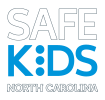© 2025 BuckleUpNC.org | Site built and maintained by UNC Highway Safety Research Center
Site supported by:



Below are answers to the most common questions asked about using car seats in other forms of transportation. If you need addition information contact us.
Yes! Rideshare vehicles and taxis are NOT exempt from the North Carolina Child Passenger Safety Law. All laws and recommendations that apply for traveling in a personal vehicle also apply for traveling by rideshare or taxi.
Yes! The safest place for your child on an airplane is in a FAA approved car seat. You can use both rear- and forward-facing car seats on airplane seats and you should install the car seat in the appropriate direction based on the age and weight of your child.
Look for the following statement in red on a sticker on your car seat to determine if your car seat is FAA approved.
“This restraint is certified for use in motor vehicles and aircraft”
Booster seats cannot be used on airplanes but you should still pack your child’s booster seat to use when you arrive at your destination.
There is one restraint system approved for use in airplanes only. The CARES (Child Aviation Restraint System) harness can be used for children between 22 and 40 pounds.
Multiple organizations have tips for parents traveling with young children:
While there may be some exceptions, generally only the driver and front seat passenger can be safely restrained in an RV because these are the only seats in the vehicle that are required to have seat belts that meet federal safety standards. Some RVs may appear to have seat belts in the back, but these belts are likely not designed to comply with the federal safety standards and thus will provide very little, if any, protection in a crash. In addition, car seat manufacturers do not allow car seats to be installed on side facing seats.
When traveling with children the best option is for all other passengers to ride properly restrained in another vehicle. Or, consider getting a 5th wheel trailer that can be towed with all passengers riding in the towing vehicle.